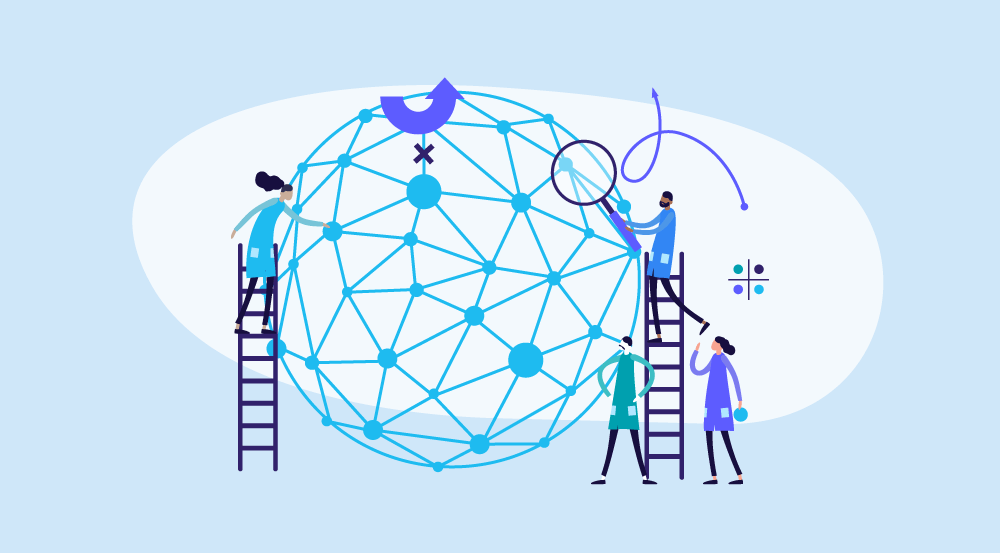You know what really sets apart a company that's doing okay from one that's truly breaking through barriers? It's innovation!
Yes, in the business world, you absolutely have to be able to adapt to and even create change if you want to stay ahead of your competition.
The findings of the Accenture 2015 US Innovation Survey echo a similar sentiment, with 84% of executives indicating that their future success is highly reliant on innovation, being classified as either very or extremely dependent.
It's all about fostering innovation in the workplace, and trust me, the payoff can be huge.
But here's the thing, it's not enough for just your leadership team to be responsible for coming up with these game-changing ideas.
Nope, innovation should be a commitment and involve input from everyone in the company, at every level.
That's how you cultivate a workforce of true innovators, and let me tell you, it could be the best growth strategy your business has ever seen.
So, how can you foster employee innovation? Well, let's dive into five key things you should keep in mind when it comes to fostering innovation in the workplace.
5 Techniques For Fostering Innovation In The Workplace
A significant 86% of companies consider innovation as a critical factor for their success.
Likewise, 73% of employees emphasize the importance of innovation within their work environment.
Wondering how to encourage innovation in the workplace?
1. Fostering a Culture of Idea Exchange
Promoting a Culture of Innovation
Is your organization fostering an atmosphere that encourages innovation and creativity?
Are your employees empowered to express their ideas freely, or are questions and suggestions viewed as disruptive elements?
- Nurturing Employee Engagement through Innovation
When your workforce is given the platform to innovate and contribute to your company's overarching mission and objectives, it results in heightened levels of engagement.
This sense of involvement instills a feeling of being integral to the organization's functioning, enabling employees to witness how their efforts drive the company's progress.
This dynamic becomes a powerful motivational factor.
- The Significance of Employee Engagement
The aspiration to cultivate highly engaged employees is universal.
The impact of employee engagement ranges from effective talent acquisition and retention to the enhancement of overall bottom-line productivity.
It can be likened to the ultimate achievement in the realm of human resources.
The productivity of workplaces is perceived to have increased by 71% of companies due to innovation.
- Creating an Idea-Friendly Environment
Your objective revolves around creating an environment wherein the open sharing of ideas is not only acceptable but actively encouraged.
Demonstrating receptiveness and showing appreciation for your employees' enthusiasm and insights is essential.
While it's understood that not all suggestions may align with the organization's directions, the value of each idea warrants consideration.
- Unveiling Hidden Potential
Once you tap into the intellectual wealth harbored within your workforce, you and your employees might discover unexpected treasures.
However, it's possible that certain individuals might exhibit reluctance to participate.
This reluctance could stem from a fear of failure or the perception that their roles lack innovation or creativity.
Empowering Reluctant Contributors
To pave the way for employees who might be hesitant to engage, contemplate the implementation of group brainstorming sessions.
Establishing ground rules that dictate the absence of any notion as a "bad idea" is crucial.
This is also the opportunity to ensure that even the more reticent employees have an avenue to partake.
- Diverse Idea-Sharing Approaches
Consider introducing diverse methods for soliciting ideas.
For instance, you could have individuals write their concepts on index cards and affix them to a communal wall.
Alternatively, for teams operating in hybrid or remote setups, a perpetually accessible survey could be initiated to facilitate idea sharing.
Regardless of the approach chosen, the primary focus should be on the ideas themselves rather than the individuals presenting them.
This inclusive approach ensures that everyone has the chance to contribute ideas, not solely those who are typically regarded as top performers.
- Evolving from Brainstorming to Action
The process doesn't culminate with brainstorming alone.
To unlock the potential for innovation, there's an inherent expectation that change needs to be embraced - whether it involves doing things differently, more efficiently, or in an improved manner.
2. Facilitate Adequate Resources for Innovation
- Providing Essential Resources
It is imperative to equip your team with the necessary time, budget, and encouragement to foster genuine innovation.
All three resources are pivotal to ensuring their success in this endeavor.
- Addressing the Time Constraint
Time consistently emerges as a scarce resource. The perpetual demands of daily tasks often overshadow future considerations.
Such a challenge may demand a cultural shift within your organization.
Allocating time for activities like brainstorming, research, testing, accepting failure, adjusting strategies, and executing plans prove to be challenging.
This endeavor necessitates unwavering commitment and meticulous planning.
It is worth noting that the cultivation of innovation and creativity hinges on the investment of ample time.
- Promoting an Innovative Culture
How can you ensure the provision of the time resource crucial for fostering workplace innovation?
- Scheduled Reflective Discussions: Set aside dedicated time each week for team discussions centered around evaluating what is effective and identifying areas for improvement.
- Encouraging Inventive Problem-Solving: Challenge your employees to collaborate and tackle challenges by devising creative solutions.
- Friendly Problem-Solving Competitions: Divide the team into groups to engage in friendly competitions aimed at addressing specific issues.
- Enhancing Skill Sets: Invest in training programs that nurture creativity, teamwork, adaptation to change, and motivation among employees.
- Normalizing Failure: Embrace failure as a valuable step towards ultimate success.
As your team adopts critical thinking, problem-solving, and creativity as integral to their daily workflow, they will be better poised to tackle significant challenges with innovation and skill.
- Resource Allocation - Budget and Tools
Turning attention to the budget aspect, it's essential to evaluate the resources your team requires to boost creativity.
Are all team members equipped with the requisite digital tools that can facilitate the generation of innovative solutions?
Should additional training be provided to facilitate learning and development in new areas of focus?
Assessing the cost required to unlock innovation potential within your team is vital.
Did you know that in the estimation of 59% of companies, innovation has played a role in diminishing costs?
- The Influence of Encouragement
The linchpin in nurturing workplace innovation is encouragement.
The first step involves elucidating the company's primary objectives, ensuring that novel ideas align with organizational goals.
Subsequently, fostering a safe environment where risk-taking is embraced becomes pivotal.
It's important to remember that not everyone is willing to voice their thoughts due to apprehensions about failure or rejection.
Yet, every individual harbors ideas, which might require time and practice to be shared.
- Sustaining Encouragement and Learning
To perpetuate encouragement and a culture of learning, you can consider:
- Recommending Resources: Propose relevant books or articles on creativity and innovation in the workplace to aid employees in tapping into their innate creative potential.
- Shadowing Opportunities: Facilitate job-shadowing experiences within the company. This exposure might inspire employees to approach their roles differently, better aligning with organizational objectives.
3. Harness Flexibility & Freedom
Do your employees have the freedom to work in a way that suits them best? It's important to consider what atmosphere, schedule, or process works best for them. How do they feel most productive?
Many employees, especially those from younger generations, prefer flexibility in their work environment.
They feel restricted and less innovative when forced to work in a specific way or follow strict instructions.
That's why organizations are reevaluating how work gets done. They are offering alternate days off, flexible schedules, longer workdays with more days off, and varied start times.
Some even allow remote work options.
Of course, some businesses cannot prioritize employee preferences due to customer needs.
However, for those that can, allowing employees to work when they are most productive can lead to better results.
When employees have the freedom to work in their preferred way, they feel more valued and engaged.
This, in turn, fosters creativity and innovation in the workplace, which ultimately boosts productivity and benefits the bottom line.
It's worth noting that companies with a rigid work structure may struggle to attract and retain employees.
The perception of an old-fashioned work environment can deter potential talent.
To stay competitive and keep your workforce satisfied, consider offering freedom and flexibility in how work is accomplished.
4. Having a Diversified Team on Board
So, what's the deal with your team? Are they all similar in their thinking?
Well, let me tell you if you've hired people who are just like you, with the same experiences, backgrounds, skill sets, and mindsets, then you're headed straight for failure when it comes to innovation.
Here's the thing - if you want innovation to really make a difference, you gotta have a mix of different ideas.
So, take a good, hard look at your team.
If they're all like you, it's time to shake things up. Your next hire needs to be someone who breaks the mold, someone with a fresh perspective.
- Diverse Hiring Is Not Enough
But here's the catch - hiring diverse people is not enough.
You gotta actually listen to them. I mean, what's the point of having people with varied skills and experiences if you're just gonna shut them out? Innovation doesn't work like that.
- Encourage Staff Development
So, here's what you can do - encourage your staff to try new things, develop themselves professionally, and stay updated with what's happening in your industry.
And when they learn something new, invite them to figure out how to incorporate it into their work.
In the end, building a diverse team is not just about ticking off a box. It's about embracing different ideas and perspectives.
So, go ahead, break the mold, and let innovation thrive!
5. Identify Individual Employee Strengths & Work Towards Them
When it comes to getting things done efficiently, it's important to assign tasks to the right people.
This means looking beyond job descriptions and considering individual strengths.
By matching skills with appropriate tasks, you can foster innovation among your employees.
Let's say you want to improve your processes and make them more streamlined. Instead of just picking your best performers to tackle this project, think outside the box.
Is there someone on your team who might bring a different perspective?
Maybe someone like Joe, who usually stays in the background and doesn't think his job involves innovation or creativity.
But wait, there's something you remember about Joe. He loves reading math and statistics books for fun.
Could his unique perspective be the catalyst for a new process at your company?
Suddenly, Joe, who never thought of himself as innovative, becomes the company's newest innovator.
Seeing Joe's success on this project, he's now ready to take on the next challenge.
By recognizing and tapping into individual strengths, you've unlocked a wave of innovation in the workplace.
So, don't be afraid to look beyond the surface when assigning tasks.
Find the right people who can bring something different and valuable to the table.
It's these unexpected matches that can lead to groundbreaking ideas and propel your company forward.
14 Examples of Fostering Innovation In The Workplace
Now that you know how to encourage innovation in the workplace, let’s have a look at some of its examples.
Having a couple of relatable examples of fostering innovation in the workplace help to outline a direction that needs to be followed.
Business owners, especially the ones that haven’t had a diverse experience of managing multiple teams or vice versa often need a little bit of hand-holding and consultation from time to time.
A formal strategy for innovation has been put into practice by 69% of companies.
Here are some of the examples of fostering innovation in the workplace to get inspired by:
1. Innovation Time-Off
One example when it comes to fostering innovation in the workplace is innovation time-off.
Google's famous "20% time" policy allowed employees to spend 20% of their work hours on projects of their own choice.
This resulted in innovative products like Gmail and Google News.
As a business owner, you could implement a similar policy, giving your employees dedicated time to work on their own creative ideas.
2. Idea Contests
When it comes to fostering innovation in the workplace, one example is to execute idea contests.
Organize innovation contests or challenges. Encourage your employees to submit their ideas for new products, services, or process improvements.
Offer rewards or recognition for the best ideas, motivating them to think outside the box.
3. Cross-Functional Teams
Form cross-functional teams from different departments to work on specific projects.
Mixing people from various backgrounds can lead to fresh perspectives and innovative solutions due to the diversity of expertise.
4. Open Innovation Platforms
Create an internal platform where employees can share their ideas and collaborate.
Platforms like IdeaScale or Slack channels can serve as a space for brainstorming and idea-sharing.
5. Regular Innovation Meetings
Hold regular innovation meetings where employees can openly discuss challenges they're facing and brainstorm potential solutions.
This encourages open communication and collaboration.
6. Fail Fast, Learn Faster
Create a culture that's not afraid of failure.
Encourage employees to take calculated risks, and when things don't work out, focus on what can be learned from the experience rather than placing blame.
7. Employee Training
Offer training programs or workshops on creativity, problem-solving, and innovation.
Providing your employees with tools to enhance their innovative thinking can have a lasting impact on your company's culture.
8. External Inspiration
Organize visits to other companies or industries to gain inspiration from their processes and practices.
Exposure to different ways of doing things can trigger innovative ideas.
9. Employee Feedback Loop
Establish a system for collecting and acting on employee suggestions. This shows that their input is valued and can lead to tangible improvements.
10. Innovation Awards
Introduce awards for innovation achievements. Recognize and celebrate employees or teams that have made significant contributions to the company's innovative efforts.
11. Customer Involvement
Involve customers in the innovation process by seeking their feedback and suggestions. This can lead to products and services that better meet customer needs.
12. Flexible Workspace
Create a flexible workspace that encourages collaboration and idea-sharing.
Open office layouts, comfortable breakout areas, and shared spaces can facilitate spontaneous conversations and brainstorming.
13. Hackathons or Innovation Days
Dedicate a specific day or time for employees to work on innovative projects without the usual constraints. This can lead to rapid idea generation and experimentation.
14. Leadership Support
Showcase your commitment to innovation as a business owner by actively participating in innovation initiatives and supporting employees' creative endeavors.
Remember, fostering innovation requires a consistent and supportive effort.
It's about creating an environment where curiosity, experimentation, and creativity are nurtured, and where everyone feels empowered to contribute their ideas.
Partner with Oreed To Harness a Culture of eLearning In Your Organization
As per McKinsey, a substantial 80% of executives express concerns about their existing business models facing potential disruption in the coming times.
Furthermore, a significant 84% of executives emphasize the importance of innovation in shaping their growth strategies.
Explore the Potential of Oreed for Empowering a Culture of eLearning in Your Enterprise.
Tailored Training for Optimal Performance
Craft personalized training and course modules utilizing Oreed's innovative features, catered to your team's distinct strengths and areas for improvement.
This approach unlocks individual potential, translating into exceptional outcomes.
Quantifiable Impact through Advanced Analytics
Leverage Oreed's robust analytics and reporting tools to gauge the effectiveness of your training strategies.
Gain invaluable insights into the correlation between training initiatives and employee performance.
This strategic approach guarantees a maximal return on your investments.
Driving Unprecedented Results
Utilize Oreed's potent learning resources to optimize productivity, efficiency, customer engagement, and profitability across your organization.
Witness substantial revenue growth and heightened customer interaction, with Oreed's potential to amplify performance by up to tenfold.
Cultivating Mastery and Discipline
Instill the principles of mastery and discipline within your workforce with Oreed's comprehensive learning ecosystem.
Empower individuals to hone expertise, refine skills, and embark on tailored learning journeys that cater to their specific needs.
Oreed promotes structured learning, fostering consistency and enduring progress.
Nurturing a Lifelong Learning Culture
Embrace the forward-looking 2030 vision by instigating a culture of perpetual learning in your organization.
Through Oreed's personalized training and analytical insights, employees are empowered to embrace continuous development, adapt to evolving landscapes, and fuel innovation.
Nurturing this learning ethos is the cornerstone of unlocking your team's ultimate potential and realizing long-term aspirations.
So what are you waiting for? Book a demo with Oreed today and find out more about our features.
Promote lifelong learning through Oreed by experiencing the most powerful all-in-one training and development intelligent platform that streamlines all your organization's learning, training, and development activities in one place.





